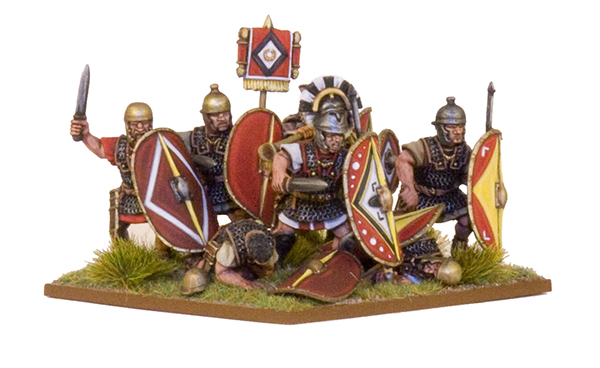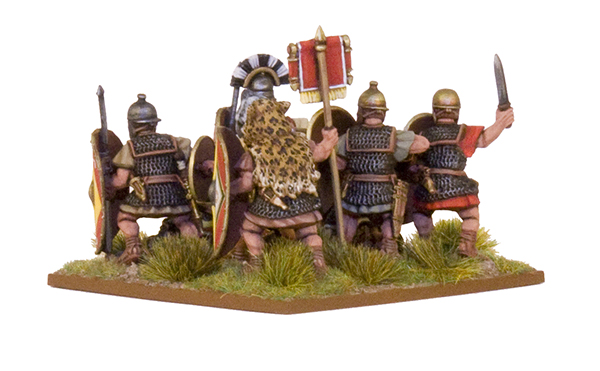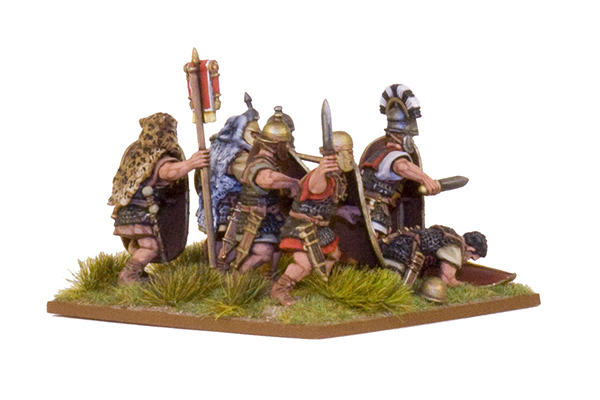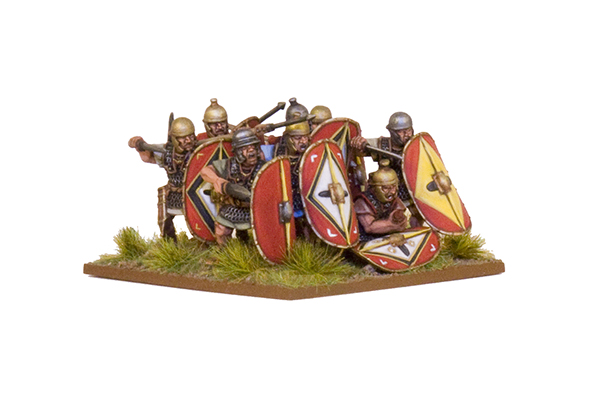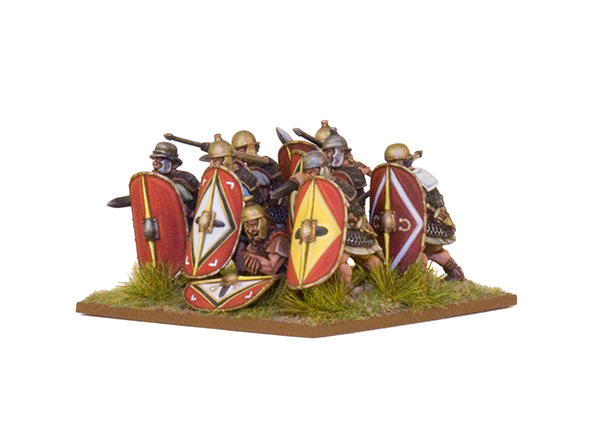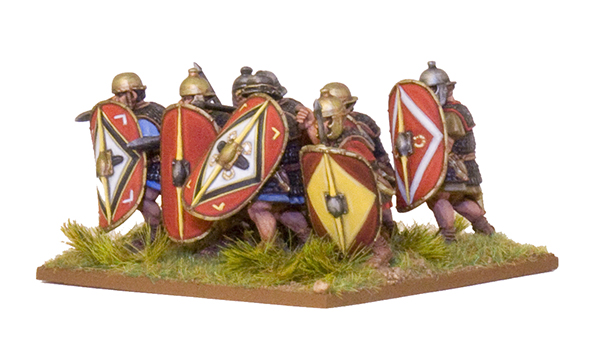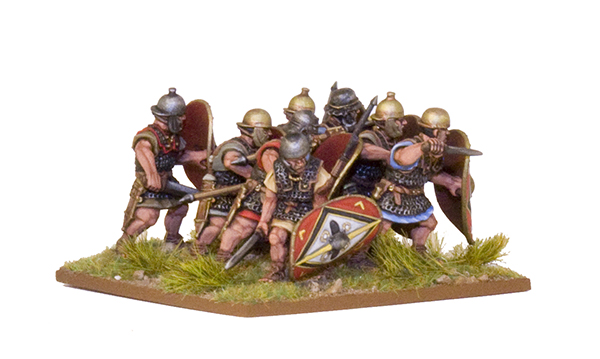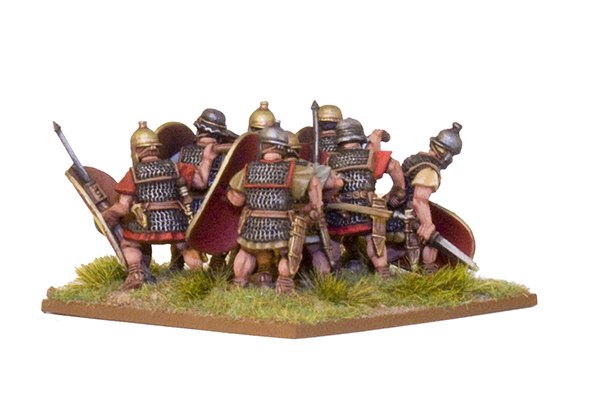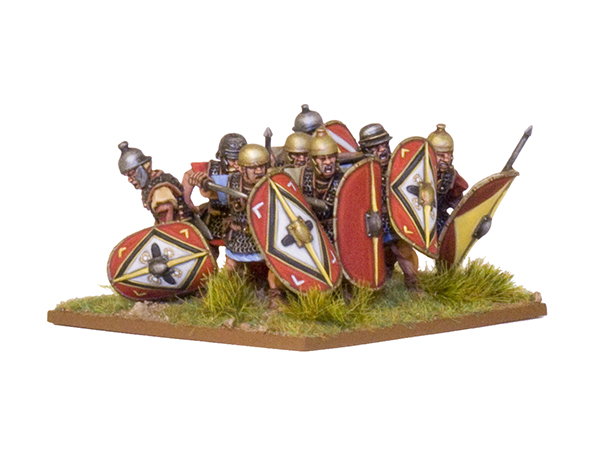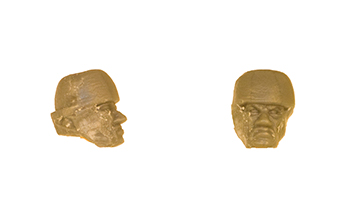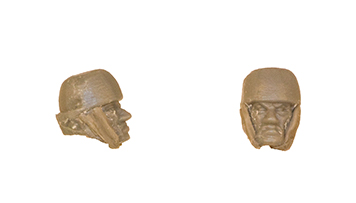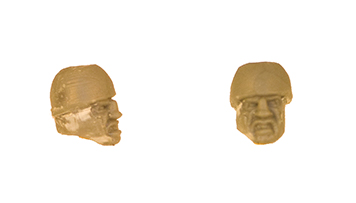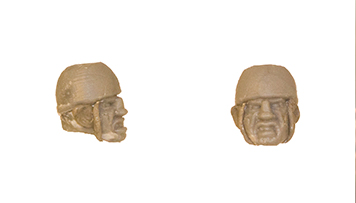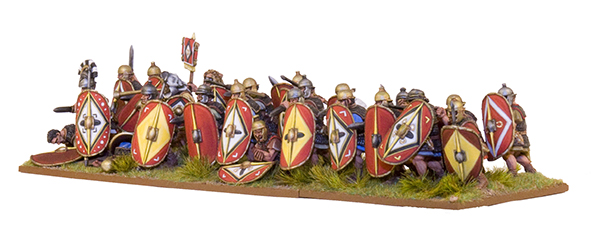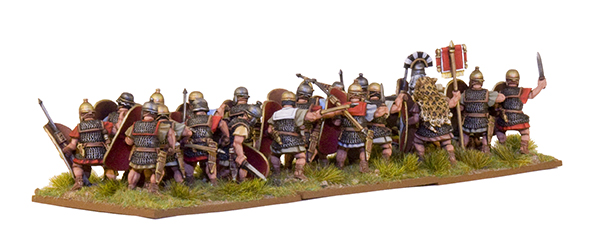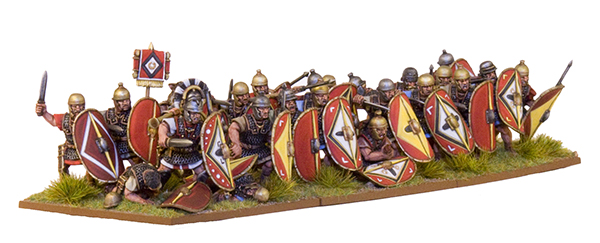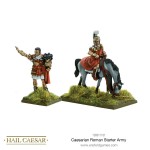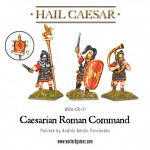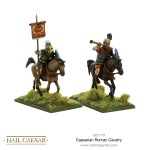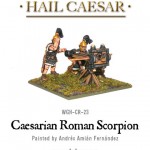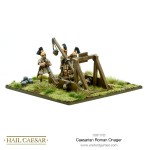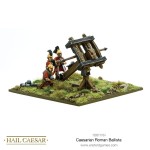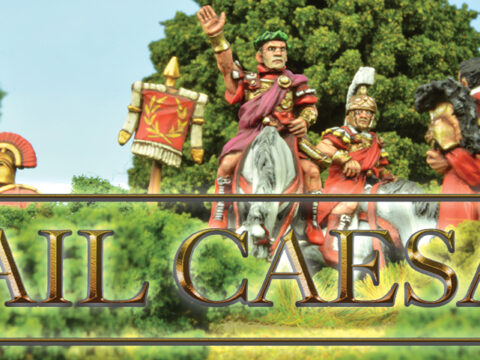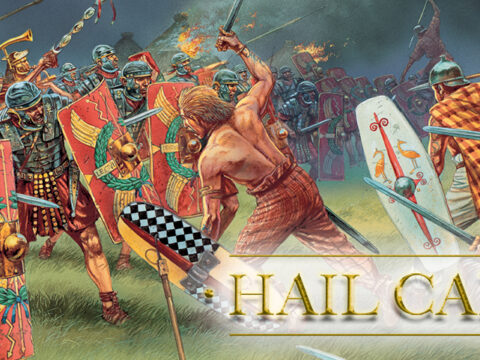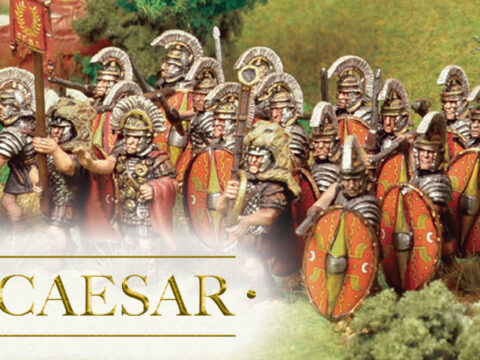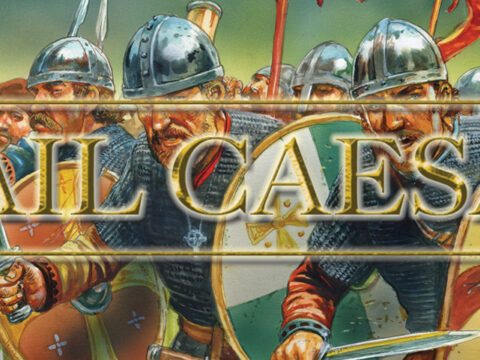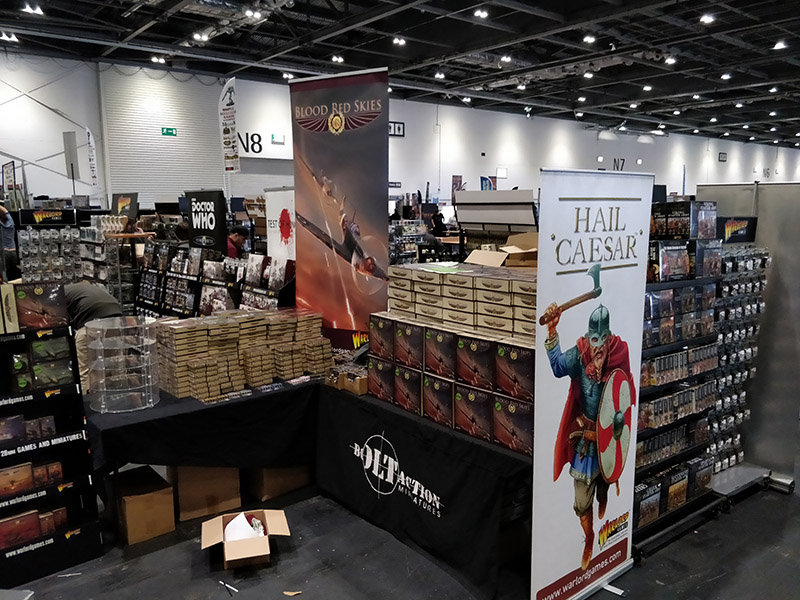Warlorder & studio painter Andrés has created another regiment with some easy conversions for you to try at home:
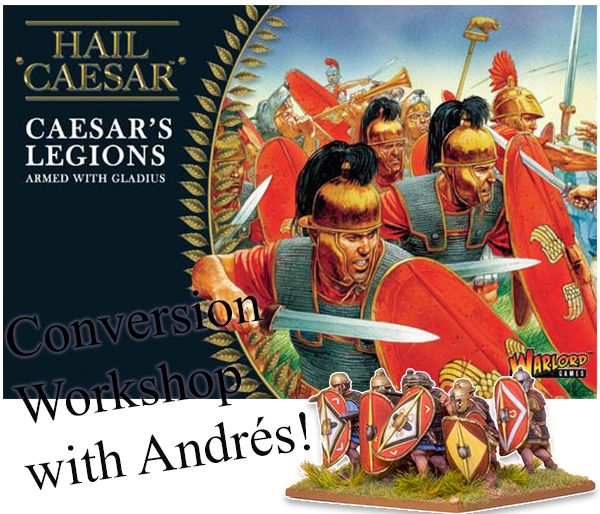
Andrés: In this second article I’ll talk about very easy and fast conversions you can perform on your plastic legionaries, to get the most out of this fantastic plastic set.
What started as an interest in trying a different colour scheme for the plastic Caesarean Romans (see my last article about painting a group of Pompeian Romans) has turned into a full project. I have painted a full box set and now I have several more units planned because I intend to paint a whole army.
After experimenting with those Pompeian Romans, I decided to change some things to speed up the painting process without losing much detail, visually speaking. I’m not painting the eyes on the miniatures, for example.
They add a lot to your miniatures, but because my lack of time and the sheer number of figures I intend to paint, those minutes you must invest in painting eyes are precious, and I’m aiming for good-looking units more than individual figures. Even with that you would see that the result is quite good.
I’m changing the basing, I’m using 60 x 60 mm bases, with eight figures per base. The narrow frontage let me create that shield wall feeling we all like to see when playing with Romans.
The extra depth will give me a bit of room to play with the position of the figures, given the animated poses and pilum staffs sticking out of the base. This facilitates the creation of small battle scenes but also the flexibility to change formation. So, every 24 men unit will have a 180 x 60 mm footprint.
Another thing I’m doing is painting the shields with variations on the same symbol, and even leaving some flat colours in some of them. The idea is to give variety but keeping a common theme. I’m using several shades of the same colour as I did with those ochre/yellow shields. A way of getting even more differences between shields, is to paint the boss bronze or gun metal.
But possibly, the main change I have introduced is the conversions to get more helmets and armour variety. And I achieved this by doing very easy and yet effective conversions. With the Pompeian Unit, I cut the horse tail on all the helmets.
This time I went for more modifications, such as cutting the whole metal knot where the horse tail is usually attached. It’s just a matter of cutting a bit more plastic than I did with the Pompeians. What I usually do is to cut the knot just a little and then carefully shave the plastic until I get a spherical surface.
By shaving the top of the helmet a bit more and making it look a bit flatter, we will have another variant.
To get another helmet type (this one looks like it was very cheap to make in great numbers), we can do several things. The first stage is to get rid of the metal knot, to shave the top a bit so we lose the completely spherical shape. Now we need to shave the neck protection, so we carefully remove all of the back edge. After that again we shave the back strap that ties the helmet to the head.
By doing all this we get the jockey cup shape characteristic of this kind of helmet. Now we have three options here, and I have used all three:
- The easiest one is just a painting solution, it’s just painting the ear flaps as if they were made of leather (some archaeologists say those helmets did have them, some say they didn’t, so I get the freedom to interpret and I use my “artistic licence”).
- The second one is to remove the ear flaps with the knife and cover it with leather straps that will cover the ears and tie down the chin.
- Despite looking complex, it’s just a matter of pressing a little ball of grey/green stuff the size of the ear and then making a very thin putty cord.
If you have leftovers from the Celts or Germanic warriors, for example, you can get those heads with helmets and use them with the Caesarean bodies, with minor modifications. I have even left some moustaches and beards, as it is well known that Caesar let his warriors keep their traditional ways.
The last one is may be a bit tricky, because I used several centurion metal heads from the Caesarean metal command set. I cut the horse tail by the knot, file the bits left over very well, and you get another legionary helmet.
By doing this I manage to get a very good variety, and considering that there are six different plastic heads per sprue and that you can paint them bronze or iron, you have a lot of combinations to play with.
Another effective conversion is filling the piece of chain mail that covers the legionaries’ shoulders to make it look like leather or linen armour. I have tried with acrylic putty, the one that you use for filling gap in model kits.
Once it dries (and that happens relatively fast) you can file it to get a smooth surface. You could do that with grey/green stuff, but it will take more time to dry and it is a bit more difficult to sand.
Remember that, if you are using Romans attacking with gladius, it’s always good if you get rid of the hilt of the sword on the miniatures’ bodies, leaving only the scabbard. It will take you a few seconds to do this. Otherwise the miniature will have a sword hanging from the belt, and another one in the hand. Not that this wouldn’t happen at some point in the middle of the battlefield, but maybe not every single legionary in the whole legion.
I hope you will find these tips useful, and I’ll continue writing about this project in future articles, covering all the different units and aspects in my army.
Do you have an article within you? Are you itching to show your collection to the world of Bolt Action? Then drop us a line with a couple of pictures to info@warlordgames.com or share with all over at the Warlord Forum
Here are more legions to expand your force!

